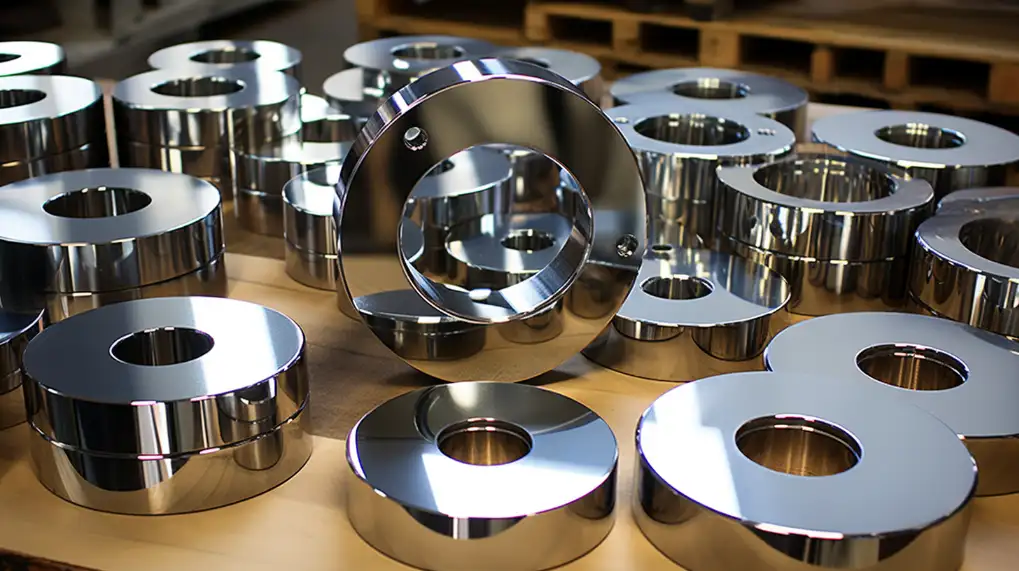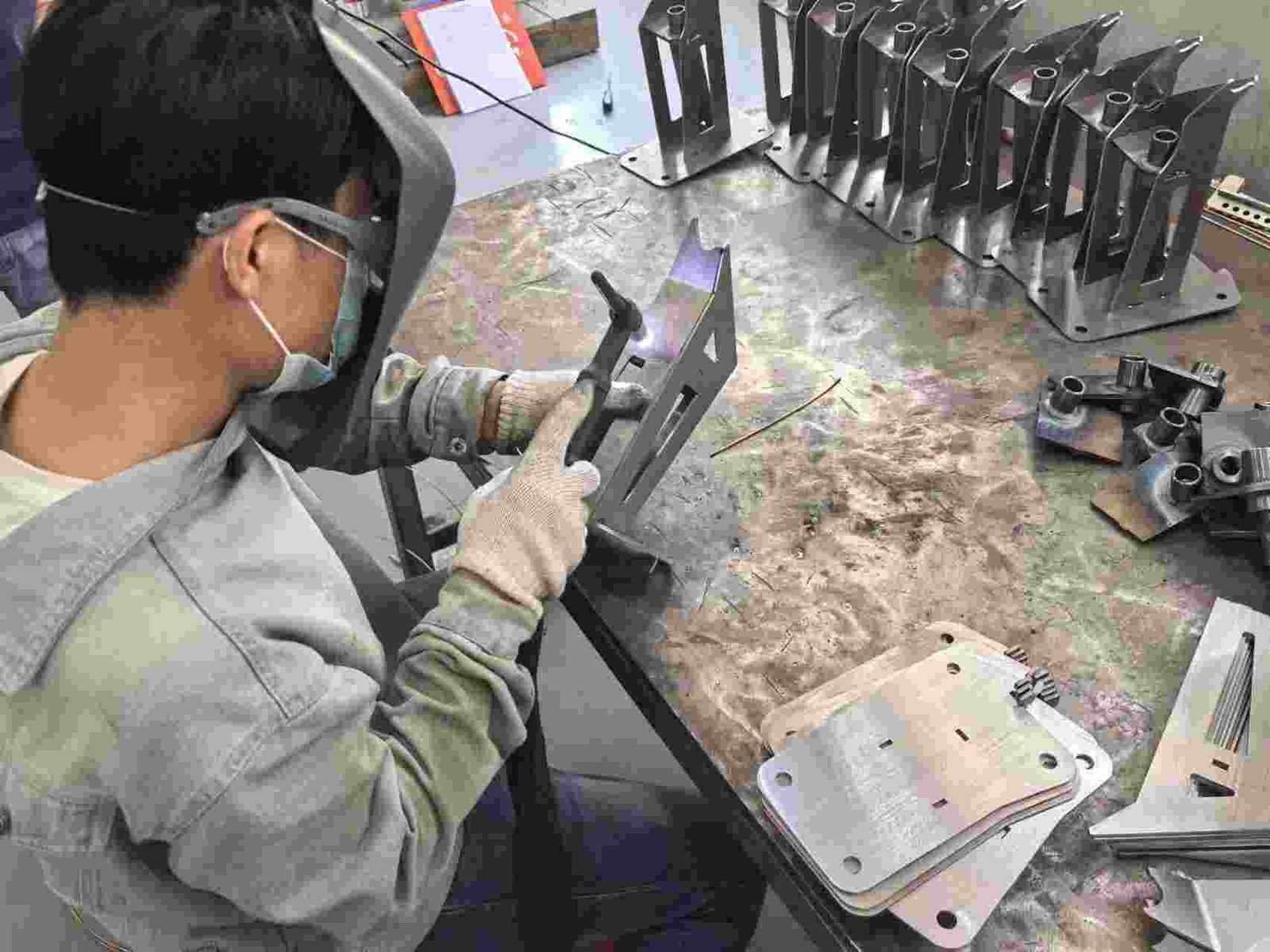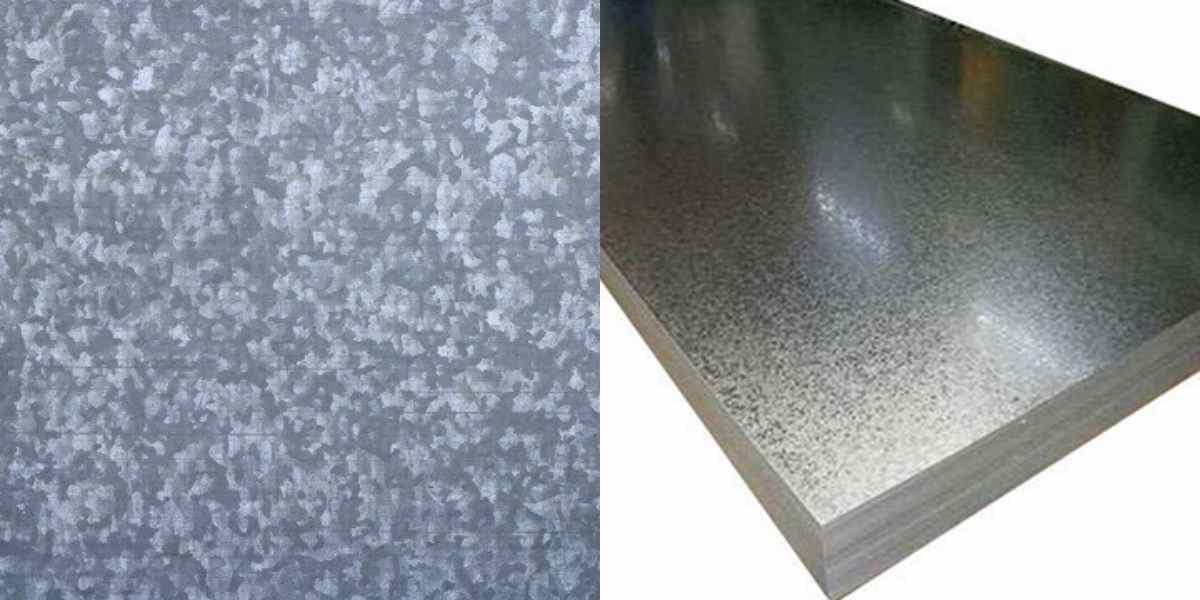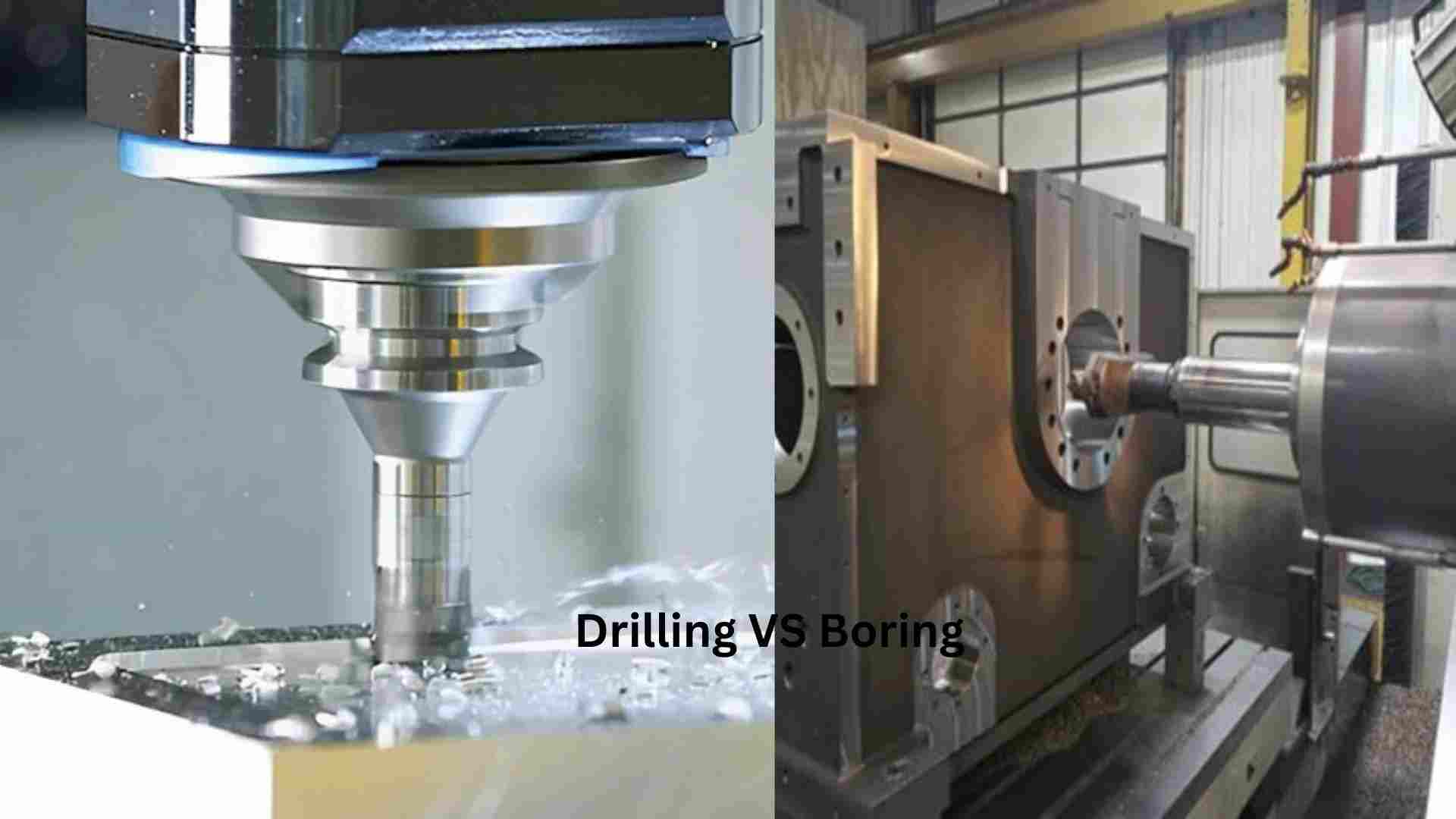Ever wondered which blasting technique is the best for surface preparation? Sandblasting and bead blasting are two popular techniques, each with its own set of advantages and considerations. Let’s explore the intricacies of each to determine which is the optimal choice for your specific needs.
Sandblasting uses abrasive material propelled at high speed to clean or prep surfaces. This method removes paint, rust, and scale from metals and concrete.
Bead Blasting uses tiny glass beads propelled by compressed air to clean or polish surfaces. This technique is highly prized because it can achieve a uniform and smooth finish without damaging delicate materials.
Which blasting method is better? The final decision depends on your project’s requirements. We will explore the differences between sandblasting and beadblasting preparation techniques.
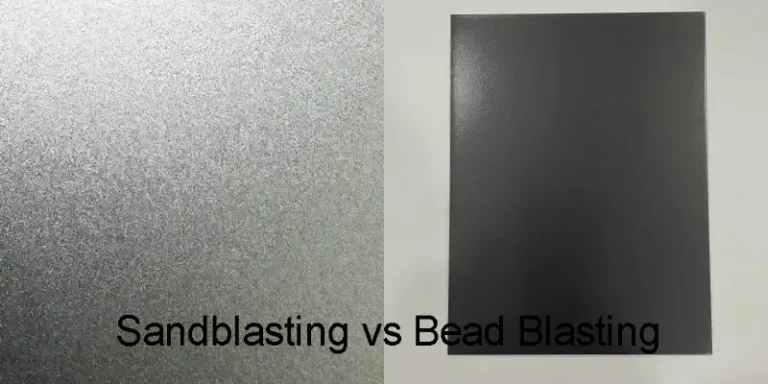
Understanding Bead Blasting
What is Bead Blasting?
Bead blasting is also known as glass bead blasting. It uses tiny, spherical materials to smoothen or prepare surfaces.
Bead Blasting Media
The outcome of bead blasting is greatly affected by the type of media that you use. Here are a few common types.
- Glass Beads: The most popular option, they offer a variety of finishes depending on their size. They are effective at cleaning surfaces without being too aggressive.
- Ceramic Beads: Similar in appearance to glass beads but with a more abrasive action.
- Plastic beads: They are Ideal for removing material from delicate surfaces.
Equipment required for Bead Blasting
For safety reasons, bead blasting is usually done in a blasting cabinet. The cabinet is a safe, enclosed environment that allows the user to blast the piece while being protected from dust and debris. Here are the main components:
- Pressurized pot: The container is pressurized and holds the blasting material. It then feeds the media through a hose into the blasting nozzle.
- Nozzle: This device directs media towards the workpiece under controlled pressure.
- Abrasive media: The media chosen depends on the desired result.
- Safety equipment: The safety gear includes respirators, gloves, and eye protection that shields the operator from dust and media particles.
Explore Sandblasting
What is Sandblasting?
Sandblasting is a powerful technique for surface treatment that uses a stream of abrasive materials under pressure to shape or texture surfaces. This heavy-duty method is ideal for removing harsh substances like rust or paint.
Abrasive materials used in sandblasting
Sandblasting is a process that uses abrasive materials to clean surfaces. The type of material used can significantly impact the final surface texture and cleaning power. Here are a few common types.
- Sand: Despite being the original choice, it is now less popular due to the health risks associated with silica dust.
- Aluminum oxide: Popular and versatile media that balances cleaning power and surface profile well.
- Glass Bead: You can use glass beads in sandblasting to achieve a cleaner surface than traditional blasting media.
- Steel Shot: Used to clean and peen metal surfaces.
Essential Equipment for Sandblasting
Sandblasting is similar to beadblasting in that it requires a blasting cabinet. Here are some of the most essential components:
- Pressure Pot: Holds abrasive material and feeds the blasting nozzle through a hose under high pressure.
- Nozzle: Directs abrasive stream to the workpiece in a controlled manner.
- Media that is abusive: As we have discussed, the choice of media depends on the desired result.
Safety equipment: Absolute necessity! The safety gear includes gloves, a respirator, and a full-body suit that protects the operator against dust and abrasive particles.
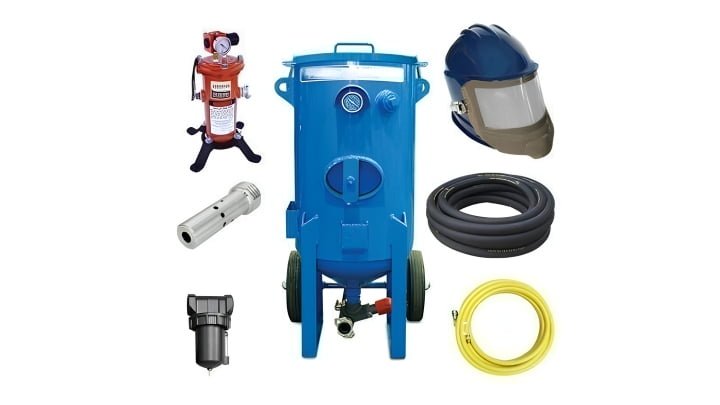
Comparing Techniques
Let’s look at the critical differences between sandblasting (or glass bead blasting) and glass bead blasting to help you select the best method for your project.
Speed and efficiency
- Sandblasting: This is generally faster because of the cleaning power. It can quickly remove thicker coatings and materials.
- Glass Bead Blasting: A slower process because of the gentler media. This is ideal for surfaces that require a particular finish or are delicate.
.Surface Finish Quality
- Sandblasting: Generally faster due to the aggressive cleaning power. It can remove thicker materials and coatings quickly.
- Glass Bead Blasting: Produces smoother, more polished, or matte finishes depending on the media used and the pressure applied.
Environmental Impact
- Sandblasting: Produces a large amount of dust, mainly when using media based on silica.
- Glass Bead Blasting: Uses environmentally friendly media such as glass beads and creates less dust.
Cost considerations
- Sandblasting: Media and equipment can be cheaper than glass bead blasting.
- Glass Bead Blasting: This can require specialized media and be slower. This can increase overall costs.
Sandblasting vs. Bead Blasting: Pros and cons
To help you make a decision, here’s a quick overview of the pros and cons of each technique:
Bead blasting
Pros:
- Gentler on surfaces, ideal for delicate materials.
- It creates a smooth and even finish.
- Reduced dust production, safer for the environment and operator.
- In some cases, media that can be reused reduce waste.
Cons:
- The cleaning process is slower than sandblasting.
- Limitation in cleaning power when dealing with heavy materials such as rust or thick paint.
- Media may be required to increase costs.
Sandblasting
Pros:
- Cleaning action that is more aggressive and faster.
- Removes heavy materials such as rust, paint, or weld slag.
- Creates a rough profile on the surface for improved paint adhesion.
- Equipment and media are less expensive.
Cons:
- It produces significant dust, which poses health risks. Safety precautions are required.
- It can damage delicate surfaces.
- Media no longer in use must be disposed of, which is less eco-friendly.
- It could be better for a smooth finish.
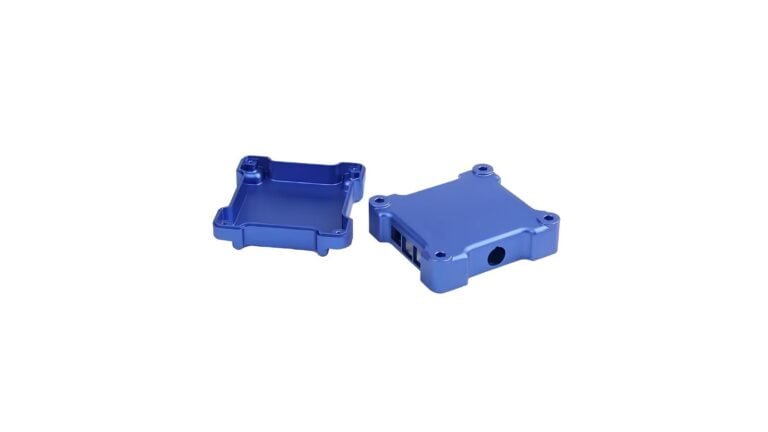
Best Practices in Bead Blasting
Let’s look at some of the best practices for blasting to ensure success.
Proper Safety Measures
Safety is always paramount! Here are some essential tips:
- Wear a respirator that has the proper filtering to prevent inhaling dust particles.
- Protect your eyes with a full-face shield.
- Wear gloves to shield your hands from the abrasive media.
- Ensure you have a proper ventilation system at your workplace to reduce dust exposure.
- Operate the blasting cabinet in a designated, well-ventilated area.
Applications and Materials Suitable
There are many applications for bead blasting.
- Surface Cleaning: Removes dirt, grime, or rust from metal, plastic, or glass.
- Surface Preparation: This creates an even, matte finish that improves paint or adhesive adhesion.
- Degreasing: Removes oil and grease from metal surfaces.
- Finishing: Creates a decorative satin or matte finish on glass, metal, or plastic.
Material compatibility is critical! Bead blasting is generally safe for most materials, but always test on a hidden area first. Avoid using it on very soft materials that can easily be damaged.
Maintenance of Equipment
Maintenance of equipment is essential to ensure optimal performance and durability.
- Inspect the blasting cabinet regularly for leaks or damage.
- Cleanse the nozzle to avoid clogs and ensure proper media circulation.
- Replace or refill the media according to the manufacturer’s instructions.
- Maintain the pressure pot according to the manufacturer’s instructions.
Sandblasting Best Practices
Sandblasting is a powerful tool, but it requires care. Here are some tips to ensure blasting is safe and effective:
Personal Protective Equipment
Sandblasting produces a lot of dust and debris. Protecting yourself is essential:
- Respirator: Absolute necessity! If you are using a sand-based medium, use a NIOSH-approved respirator with the proper silica filtering.
- Complete body suit: Protects skin from abrasive particles.
- Eye Protection: Wearing a full-face shield will protect your eyes from media that ricochets.
- Gloves: Thick, thick gloves protect your hands from abrasive materials.
Surface Preparation Guide
Preparation is critical to a successful blasting project.
- To prevent injury and movement, secure the workpiece in the blasting cabinet.
- Cleanse the Surface To remove loose contaminants, such as oil or grease, which can hinder blasting effectiveness.
- Use masking tape to mask off areas you do not want to be sandblasted.
- Test a scrap piece of the same material to determine the best media, pressure, and blasting angle.
Environmental Considerations
Sandblasting can create significant dust. How to reduce environmental impact
- Use a blasting cabinet to contain dust and debris.
- A dust-collection system captures dust particles and maintains a clean working environment.
- Use alternative cleaning media like glass beads to clean less aggressively. This is especially important if you are working inside.
Choose the right tool for Bead Blasting or Sandblasting.
Here’s a quick guide to help you choose the best method for your project.
Bead blasting is the best option if you:
- Working with a surface that is delicate and can’t be cleaned aggressively.
- Your workpiece should have a matte, smooth, or polished finish.
- Priority is given to minimizing dust production.
- Reusing the blasting media is an environmentally friendly option (depending on the media type).
Examples of applications that are well suited to bead blasting:
- Clean and polish jewelry, silverware, or other delicate metal items.
- Degreasing metal surfaces or engine parts.
- Create a matte look on aluminum or stainless steel for a modern appearance.
- Texturing plastic or glass to improve grip or light diffusion.
Choose Sandblasting in the following cases:
- It is essential to remove heavy materials such as rust, thick paint, or weld slag quickly.
- For better adhesion, a rough surface is desirable.
- A less expensive medium is acceptable if cost is the primary concern.
Sandblasting can be used for a variety of applications, including:
- Remove rust from metal surfaces such as car frames and other surfaces that are heavily oxidized.
- Surfaces can be prepared for powder coating or painting by creating a texture profile to improve adhesion.
- Texturing concrete or stone for a decorative finish.
- Cleaning and peening metal surfaces improve their strength and make them fatigue-resistant.
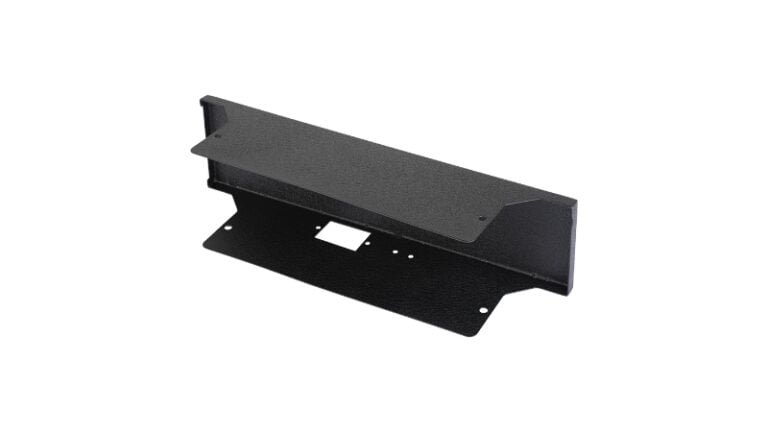
Bead Blasting vs. Sandblasting: Application Areas
Here are some more examples of how sandblasting and beadblasting can shine.
Applications of Bead Blasting:
- Automotive: Cleaning engine parts, removing grease, polishing trim, and achieving a matte look on aluminum wheels.
- Aerospace: Surface prep for delicate aircraft parts. Cleaning and texturing of windshields to improve light diffusion.
- Consumer Products: Cleaning, polishing, and caring for jewelry, silverware, and other metal accessories. Create a decorative finish for electronics or appliances.
- Medical Devices: Cleaning and deburring medical instruments to achieve a smooth implant surface.
- Restoration: Cleaning antique furniture, classic cars, or other delicate items.
Sandblasting Application:
- Construction: Remove graffiti or paint, prepare surfaces for concrete repair, and texturize surfaces for better grip.
- Metal Fabrication: Remove rust, scale, or weld slag from metal structures or bridges. Create a rough surface to improve paint adhesion.
- Shipbuilding: Remove barnacles from the hulls of ships and prepare surfaces for painting.
- Glass and Stone Work: Sandblasting patterns or designs onto glass to create a unique appearance.
Conclusion
It’s essential to consider factors like the type of material that will be treated, the desired finish, and the requirements for the project when deciding whether or not to use sandblasting. Understanding the strengths and weaknesses of each technique will help you choose the best method for your project.
Do you need a reliable sheet metal parts manufacturer? Shengen is the place to go. We specialize in sheet metal laser cutting, bending, surface finish, and CNC Machining. Reach out to Shengen Today and seek help from professionals!
FAQs
Which method is better for removing paint?
Due to its aggressiveness, sandblasting is more effective for removing paint from surfaces, mainly metal. While bead blasting is effective, it can take a long time.
Is either technique environmentally friendly?
Both bead blasting and sandblasting techniques can cause airborne dust and particles to be released into the atmosphere, which can have severe health and environmental implications if they are not appropriately controlled.
Can bead blasting be used on glass surfaces?
Bead blasting is a technique that can be used to create various effects on glass, such as cleaning, etching, and frosting.
Does Bead Blasting Remove Rust?
Yes. Bead blasting is an effective way to remove rust. The glass beads’ impact helps remove and break down rust particles.
More Resources:
Eco-Friendly Surface Preparation – Source: Ajecoblasting
How sandblasting removes rust – Source: Airblast AFC
Surface Preparation Equipment – Source: SurfacePrep
Hey, I'm Kevin Lee

For the past 10 years, I’ve been immersed in various forms of sheet metal fabrication, sharing cool insights here from my experiences across diverse workshops.
Get in touch

Kevin Lee
I have over ten years of professional experience in sheet metal fabrication, specializing in laser cutting, bending, welding, and surface treatment techniques. As the Technical Director at Shengen, I am committed to solving complex manufacturing challenges and driving innovation and quality in each project.

